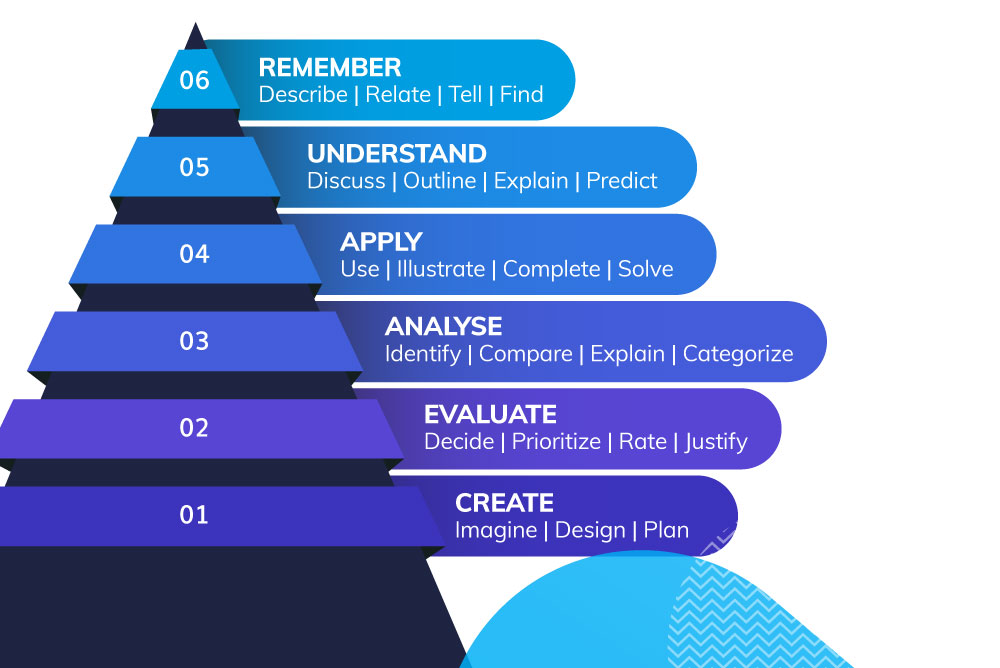How bloom’s taxonomy is useful in the digital world.
Bloom’s Taxonomy created by Benjamin Bloom in 1956 is a pyramid like structure that helps in classifying and organizes educational goals and performance into specific categories being used for everything from framing digital tasks and evaluating apps to writing questions and assessments.
How Bloom’s Taxonomy is useful for Teachers
Bloom’s Taxonomy can be utilized as a common language for teachers to Discuss and Exchange learning and assessment methods. It helps teachers to derive specific learning outcomes from the taxonomy as it is used to assess learning on a variety of cognitive levels. By using Bloom's Taxonomy the teacher can encourage higher order thought in their students by building up from lower- level Cognitive skills. Following are the steps in Bloom’s Taxonomy and how it improves learning with Online Classroom Management powered by Digival.
Below are the six levels of knowledge in Bloom’s Taxonomy:
-Remember
-Understand
-Apply
-Analyse
-Evaluate
-Create
Knowledge and skills become cognitively demanding when you move up the framework.
Here is how Bloom’s Taxonomy Breaks Down:
Remember
This is a basic stage of the taxonomy where the teachers might just ask to read a chapter from the textbook, recite a poem or formulas. Where students just recognize and recall basic facts, concepts, processes , patterns and structure.
Understand
At this stage students can comprehend the meaning and their perception of understanding of the concept that they learnt and communicate them to others.
Apply
At this stage the students have to apply their knowledge and skills by creating a budget or by writing a story or visualizing a particular character and interpret it in the way they want it.
Analyze
This level is where the students use their own judgement and begin to Analyze the knowledge they have learnt. At this point they start understanding the underlying structure to knowledge and also are able to distinguish between facts, opinions.
Evaluate
At this level students use their knowledge and skills they have learnt so far to appraise a situation and state opinion and justify their stance.
Create
At this level students formulate their own solutions to the problems and create their original work. At this level students can create their own blog, design a business plan for a new company.
Digital Assessment Solutions Digital Classroom Solutions Digital eLearning Solution Digital Learning Solution Digital Scheduling Solution Digital Scheduling System Modern Education SchoolHigher Education eLearning Learning Management Solutions Online Assessment Platform



